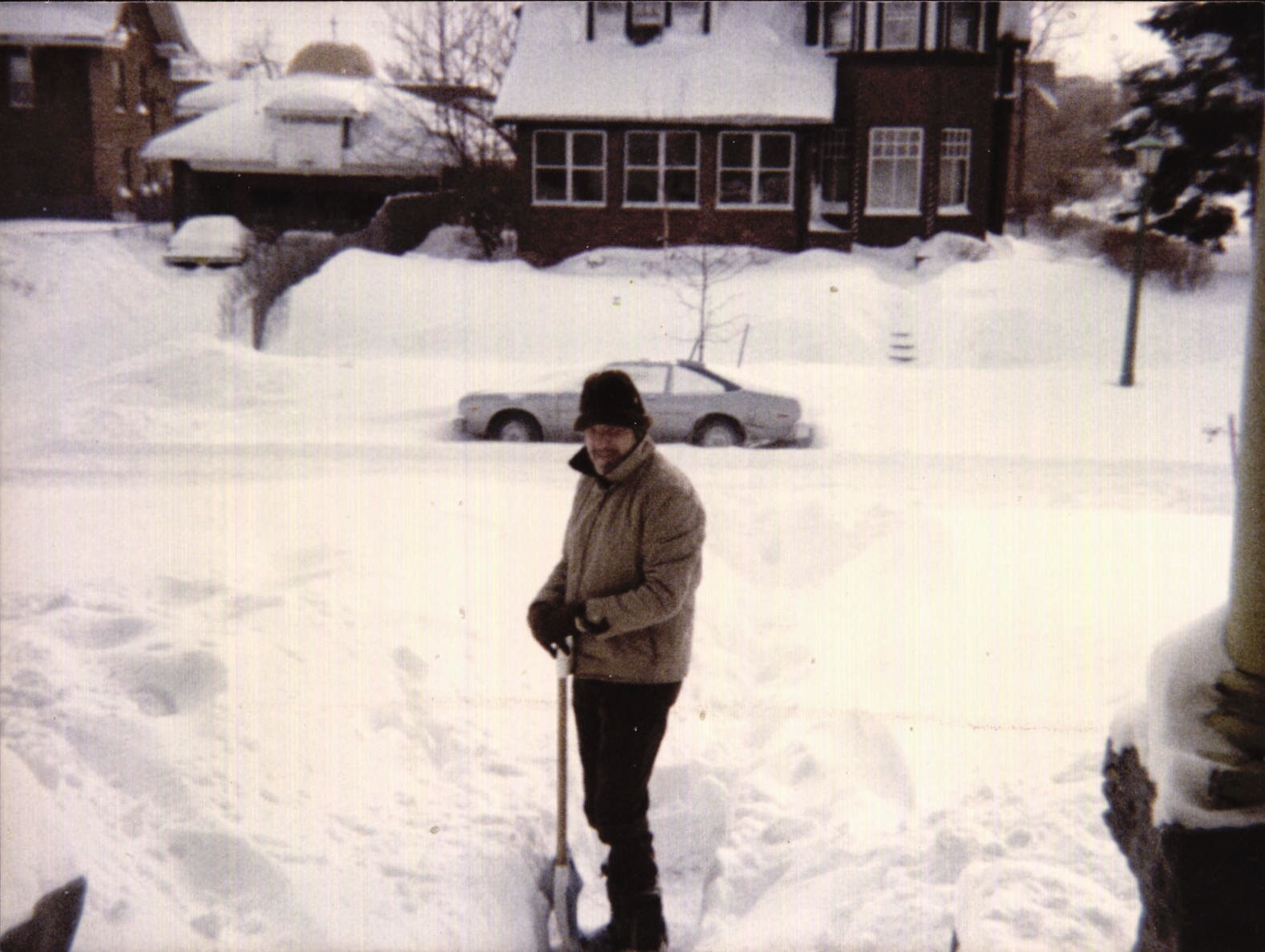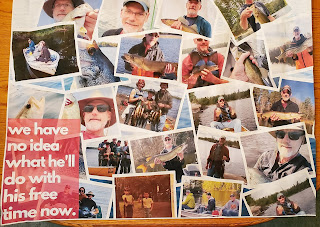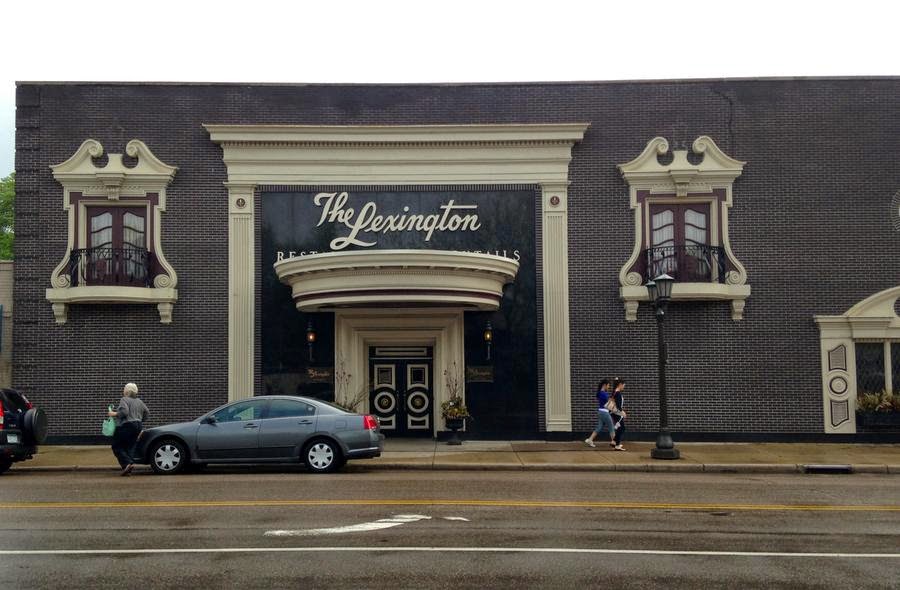Plug In Cars (before they were fashionable)
From an automotive standpoint, this time of year was always a tough one growing up in Minnesota. It wasn't just because winters were brutally harsh, it was partly that cars just weren't as well made as they are today. Now we have fuel injection, heated seats, better battery technology, rear defrosters, remote starts and even heated mirrors.
Where I grew up, we had a small one car garage that had to be opened manually. Often times, the snowbanks were so big that it took about 27 shifts of the tranny to jockey Mom's old Chevy Impala into the garage - that was when there was room to fit it IN the garage. More often it was cluttered with motorcycle parts or other clutterables. Mom sometimes parked it there in an attempt to give it a prayer toward starting on those really frigid mornings in January and February.
These were the days when our neighbors who owned a big rear-wheel drive Oldsmobile Toronado used to actually take his battery into the house overnight to keep it warm. This might seem like extreme behavior coming from those of you living in warmer climes, but as their neighbor, we totally got it.
Between the car battery coddling, and the 100 yard extension cord they ran out to the radiator heater element, well, every day was an adventure. Again, plugging your car in was not strange behavior at all. I was a little surprised to see it wasn't practiced as much in Wisconsin when I first moved here. (Though it was around if you looked hard enough.)
In a related bit of winter insanity, whenever possible, Mom always parked her car with the rear end to the wind because she thought that the wind blowing into the grille made it harder to start. Thing is, I think she was probably right. It made sense anyway, despite the claims that "windchill doesn't affect cars". It was a probably some sort of urban myth, but up there, man, you'll try anything to give you and edge.
My first car was a 1968 Oldsmobile Cutlass with 104,000 miles on it. It had very little going for it at this stage in its life. But when you're 17 you tend not to think too rationally when someone offers you a running car for $400.
About the only appealing thing this car had in the winter months was its snow tires (which I ran year round, because, who can afford new tires?). The heater worked on two speeds, but not the highest. The defroster was sorely inept and the rear window was a window in name only from November to March. It was so frosted up most of the time that it might as well have been plywood.
One of the miracle cures for the Cutlass when it wouldn't start in the winter was to spray some "starting fluid" into the carburetor. In essence this stuff was like spraying pure gas into your engine. Unfortunately like any good drug addict, the Cutlass got more and more dependent on it to start.
One night on my way home from the Christmas party that was thrown by the restaurant I worked for, the car started choking and spitting. Eventually it died. Starting fluid did nothing. Then, eventually I killed the battery trying to start it. My brother came and rescued me, got it running again and we limped it home.
It sat in front of the house until it got plowed in and I got a parking ticket.
Eventually I managed to move it over to the St. Luke's parking lot so the ticketing would stop. After diagnosing that the fuel filter must have been clogged, I tried to change it myself. In so doing, I managed to split the fuel line. Oh, the humanity!
A week later, I junked it for $50. Winter won the battle.
Now I'm not saying that winters are any easier than they used to be. They are long, grueling months. But when it comes to cars, things are appreciably easier. All season radial tires eliminate the need for snow tires, no one plugs in their car anymore (for the most part) and other than an occasional dead battery, fuel injection has made cars much more reliable starters.
And for that I am eternally grateful.
Blogging off...
Where I grew up, we had a small one car garage that had to be opened manually. Often times, the snowbanks were so big that it took about 27 shifts of the tranny to jockey Mom's old Chevy Impala into the garage - that was when there was room to fit it IN the garage. More often it was cluttered with motorcycle parts or other clutterables. Mom sometimes parked it there in an attempt to give it a prayer toward starting on those really frigid mornings in January and February.
These were the days when our neighbors who owned a big rear-wheel drive Oldsmobile Toronado used to actually take his battery into the house overnight to keep it warm. This might seem like extreme behavior coming from those of you living in warmer climes, but as their neighbor, we totally got it.
Between the car battery coddling, and the 100 yard extension cord they ran out to the radiator heater element, well, every day was an adventure. Again, plugging your car in was not strange behavior at all. I was a little surprised to see it wasn't practiced as much in Wisconsin when I first moved here. (Though it was around if you looked hard enough.)
In a related bit of winter insanity, whenever possible, Mom always parked her car with the rear end to the wind because she thought that the wind blowing into the grille made it harder to start. Thing is, I think she was probably right. It made sense anyway, despite the claims that "windchill doesn't affect cars". It was a probably some sort of urban myth, but up there, man, you'll try anything to give you and edge.
My first car was a 1968 Oldsmobile Cutlass with 104,000 miles on it. It had very little going for it at this stage in its life. But when you're 17 you tend not to think too rationally when someone offers you a running car for $400.
About the only appealing thing this car had in the winter months was its snow tires (which I ran year round, because, who can afford new tires?). The heater worked on two speeds, but not the highest. The defroster was sorely inept and the rear window was a window in name only from November to March. It was so frosted up most of the time that it might as well have been plywood.
One of the miracle cures for the Cutlass when it wouldn't start in the winter was to spray some "starting fluid" into the carburetor. In essence this stuff was like spraying pure gas into your engine. Unfortunately like any good drug addict, the Cutlass got more and more dependent on it to start.
 |
| 1977 Plymouth Volare awaiting unburial |
It sat in front of the house until it got plowed in and I got a parking ticket.
 |
| Rear of house |
A week later, I junked it for $50. Winter won the battle.
Now I'm not saying that winters are any easier than they used to be. They are long, grueling months. But when it comes to cars, things are appreciably easier. All season radial tires eliminate the need for snow tires, no one plugs in their car anymore (for the most part) and other than an occasional dead battery, fuel injection has made cars much more reliable starters.
And for that I am eternally grateful.
Blogging off...


Comments